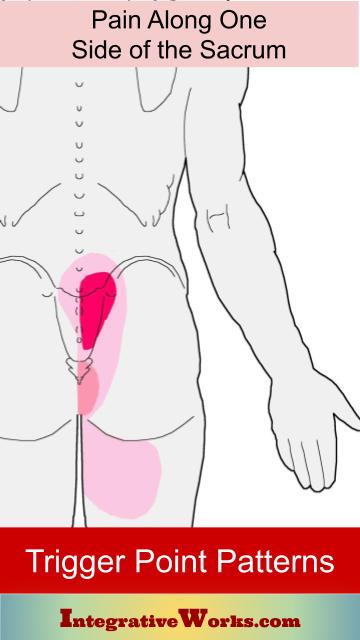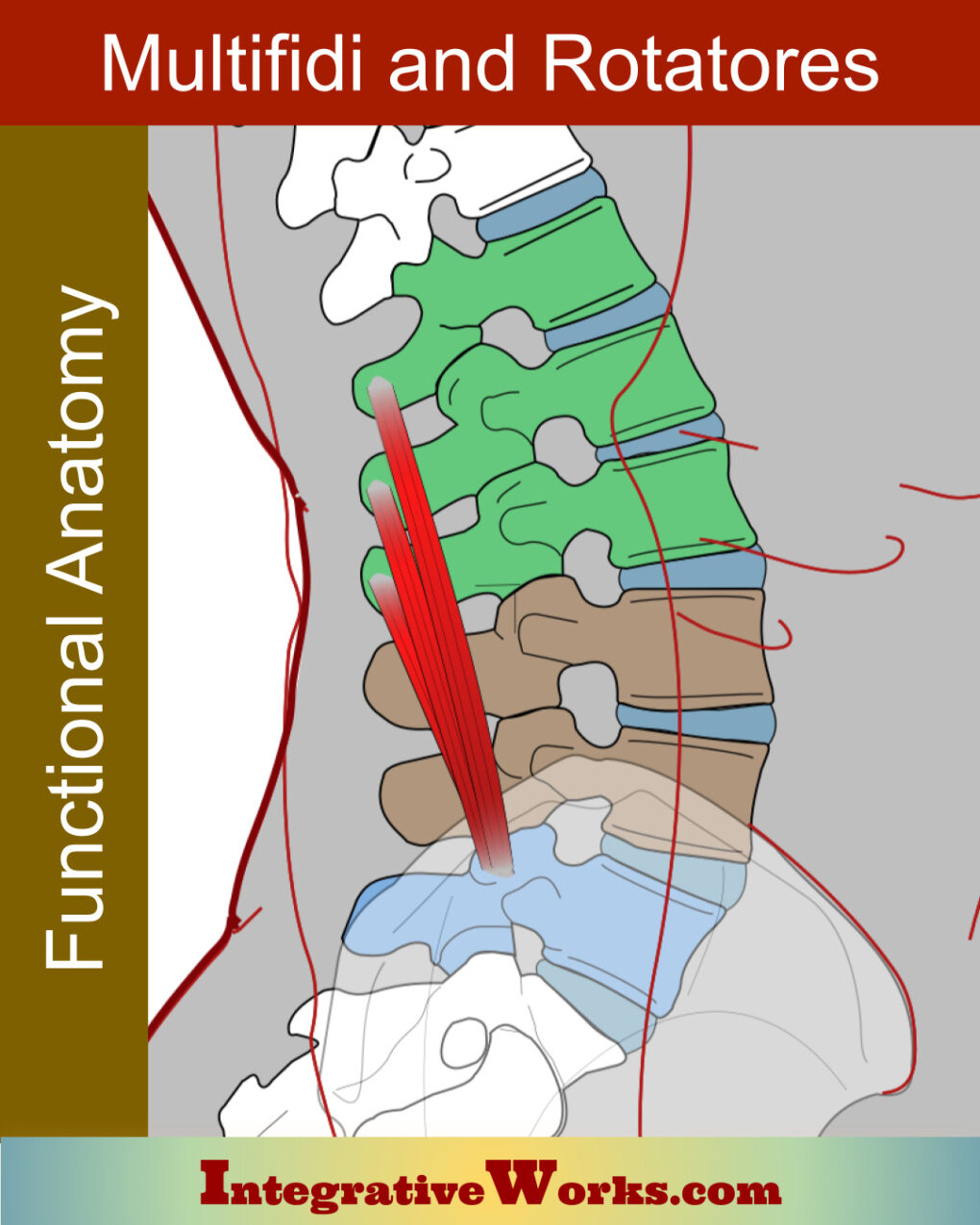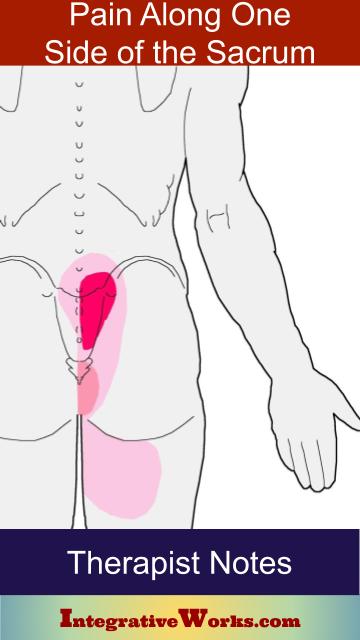Table of Contents
- How People Describe This Pain Pattern
- How You Activate and Intensify This Pain Pattern
- Self-Care – Getting Relief on Your Own
- Musculoskeletal Anatomy Behind Your Pain
- Therapy Notes for Massage and Bodywork
How People Describe This Pain Pattern

These people complain of pain up and down their sacrum on one side. When I ask where it hurts, they straighten their fingers and place their index and thumb along their sacrum, slightly to one side.
They complain of pain when bending forward. It may be dull or sharp, depending on how long they have let it go and what they have done to remedy it. It hurts when it presses into a chair or when it is touched with light or deep touch. The pain in sacrum is dominant, and they seldom complain about the pain in the leg, even when they are asked directly.
This is a fairly common pattern and varies in its intensity. When it is very involved, it creates the pain that extends into the upper thigh and feels sharp, like something is pulled or injured. I’ve had this myself from time to time, including earlier this year. It can linger when it is ignored but can also be resolved quickly when properly addressed.
How You Activate and Intensify This Pain Pattern

For younger or more athletic clients, this is often caused by a sports injury, slip on the ice or motor vehicle accident that jars the hip.
As clients get older, these muscles are some of the first to atrophy in as clients get into their late 30s and early 40s. They are more prone to this problem from a simpler twist while getting into the car or sleeping in an awkward position. It may also occur during heavy lifting while bending a the waist, instead of squatting to use legs. The back is more fragile at this age and the client is adapting to w stiffer low back with less flexible joints.
The Musculoskeletal Anatomy Behind Your Pain
Musculoskeletal Anatomy
This post on anatomy contains standard information about the origin, insertion, function, and innervation of muscles. Additionally, it includes information on functional considerations and anomalies.
Find Related Posts
Anatomy posts have a grid of all related posts. This includes posts on pain patterns, self-care, therapy notes, NMT protocols, cranial techniques, and cases.
Getting Relief on Your Own
Clinically Proven
Self-Care Strategies
This post has strategies for getting relief on your own. Explore how to change your activities, stretch, and other strategies that relieve the pain associated with this trigger point.
Therapy Notes for Massage and Bodywork
Better Bodywork
Through Shared Expertise
This post has techniques, tips, treatment routines, and anatomy illustrations to improve the bodyworker’s approach.
Support Integrative Works to
stay independent
and produce great content.
You can subscribe to our community on Patreon. You will get links to free content and access to exclusive content not seen on this site. In addition, we will be posting anatomy illustrations, treatment notes, and sections from our manuals not found on this site. Thank you so much for being so supportive.
Cranio Cradle Cup
This mug has classic, colorful illustrations of the craniosacral system and vault hold #3. It makes a great gift and conversation piece.
Tony Preston has a practice in Atlanta, Georgia, where he sees clients. He has written materials and instructed classes since the mid-90s. This includes anatomy, trigger points, cranial, and neuromuscular.
Question? Comment? Typo?
integrativeworks@gmail.com
Interested in a session with Tony?
Call 404-226-1363
Follow us on Instagram

*This site is undergoing significant changes. We are reformatting and expanding the posts to make them easier to read. The result will also be more accessible and include more patterns with better self-care. Meanwhile, there may be formatting, content presentation, and readability inconsistencies. Until we get older posts updated, please excuse our mess.





